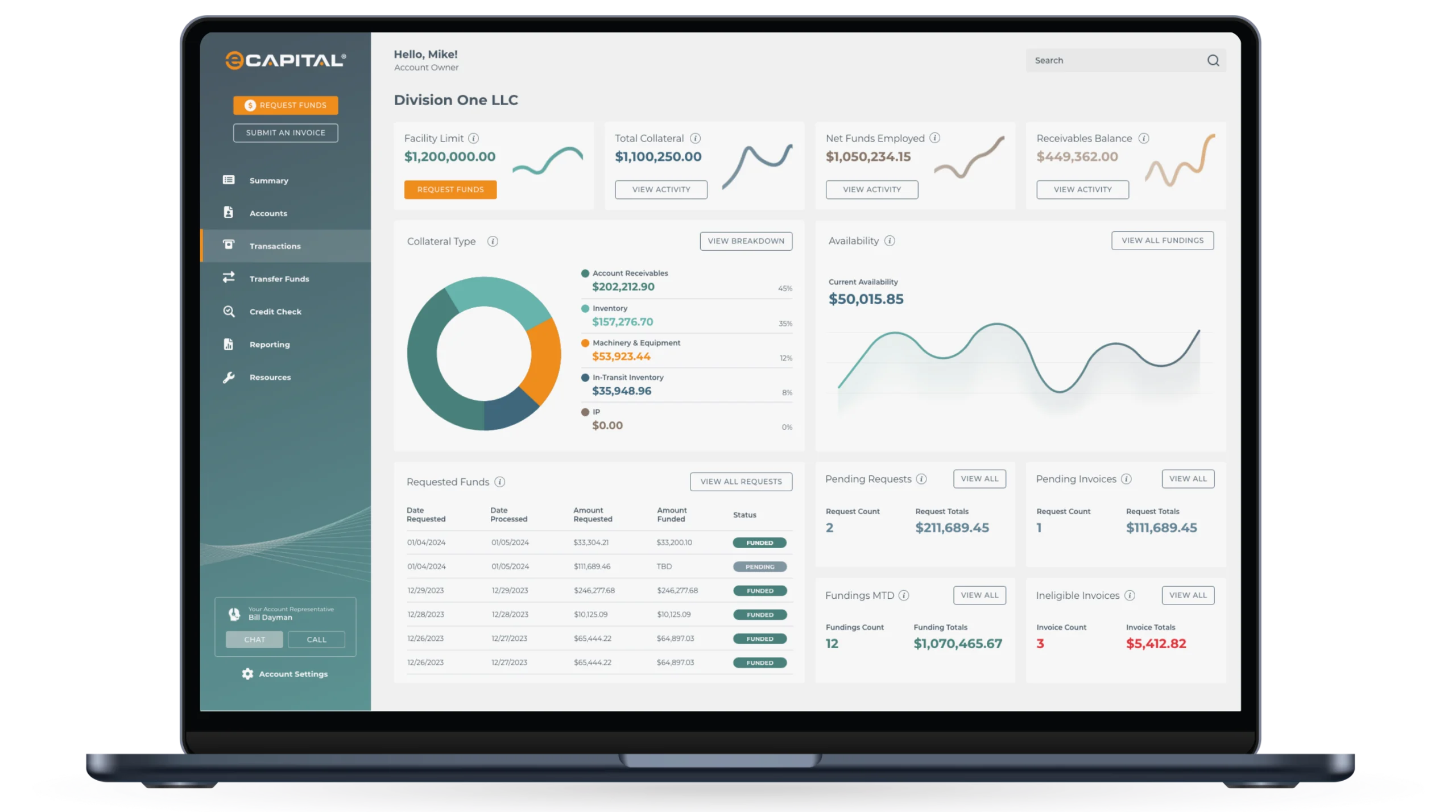EXIT FINANCING
Smart capital access that restores stability post-restructuring
Unlock working capital to complete your exit, resume operations, and position your business for long-term success—without disruption.
Unlock working capital to complete your exit, resume operations, and position your business for long-term success—without disruption.
Built for businesses navigating the final stages of restructuring, this financing solution provides essential capital to meet exit requirements, maintain operations, and support a strong return to market.
Ensure smooth transition with capital in place to meet obligations and restart operations.
Support working capital needs and position the business for long-term recovery.
Maintain momentum, pay employees and suppliers, and protect customer relationships.

Clients choose eCapital when they need an engaged, solutions-oriented, long-term credit partner with proven capacity, creativity, and continuity. Our expertise is customization—whether on a $5 million or $150 million facility, employing a meticulous, hands-on strategies.
Our tight-knit group of financing experts are agile and client-centric, yet backed by extensive resources with the scale to conquer any challenge. This means we are going to be a better credit partner through every business cycle, bringing capabilities and passion—as patient, flexible problem-solvers—other providers simply do not have. Our track record speaks for itself.
"*" indicates required fields
Exit financing is a form of funding that helps businesses transition out of restructuring or bankruptcy. It provides the capital needed to stabilise operations, pay off existing debts, and support long-term growth post-exit.
It’s most commonly used when a company is emerging from Chapter 11 bankruptcy or completing a formal restructuring. It ensures the business has the working capital needed to resume normal operations and regain market confidence.
Debtor-in-Possession (DIP) financing is used during bankruptcy proceedings. Exit financing comes after a reorganisation plan is confirmed and helps the business operate post-exit.
It can cover a range of needs, including settling remaining creditor obligations, restocking inventory, ramping up operations, rehiring staff, and funding future growth.
Mid-sized and large businesses across sectors—especially those with valuable assets or proven post-restructuring strategies—use exit financing to regain stability and rebuild momentum.
Lenders assess the company’s reorganisation plan, asset base, management team, financial projections, and ability to generate future cash flow.
Amounts vary, but the facility is often structured to cover outstanding restructuring obligations and provide runway capital for 12–24 months.
Yes. Exit financing is often asset-based and can be secured against real estate, receivables, inventory, or equipment to maximise borrowing capacity.